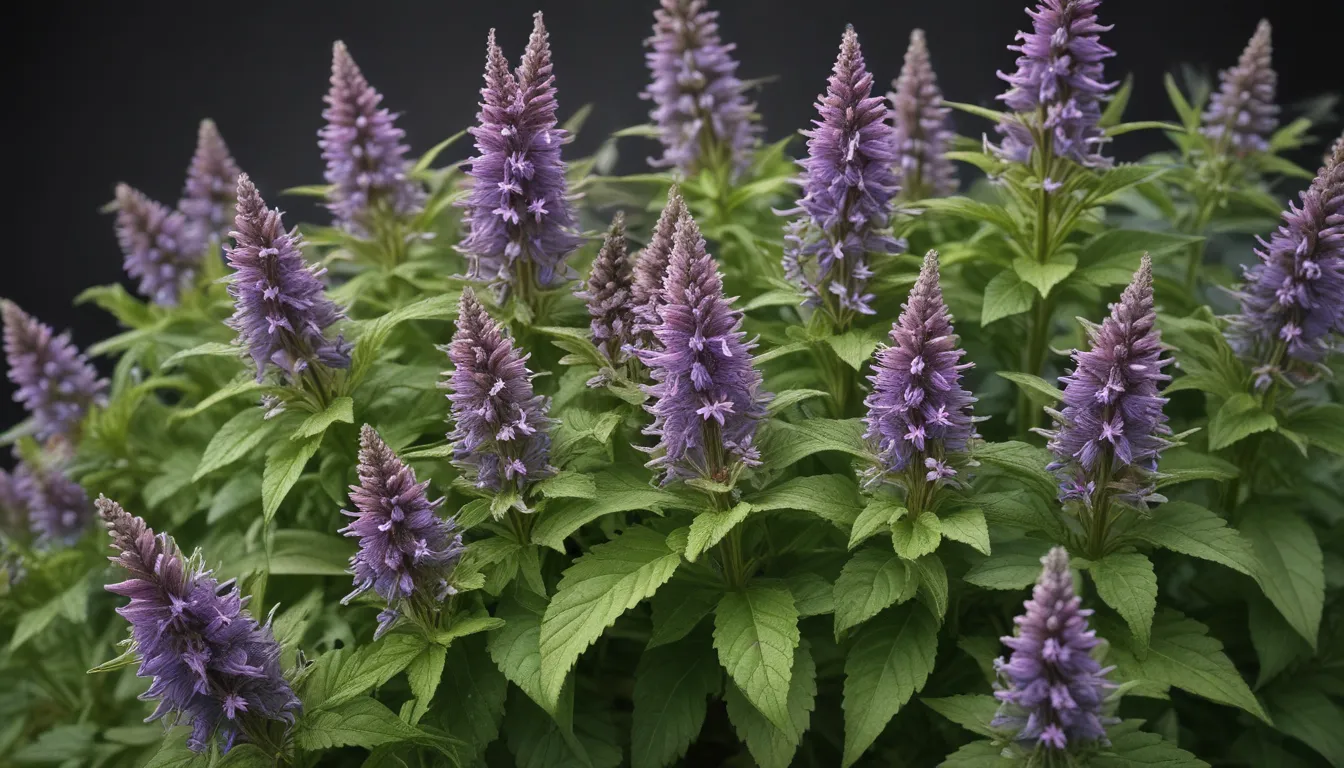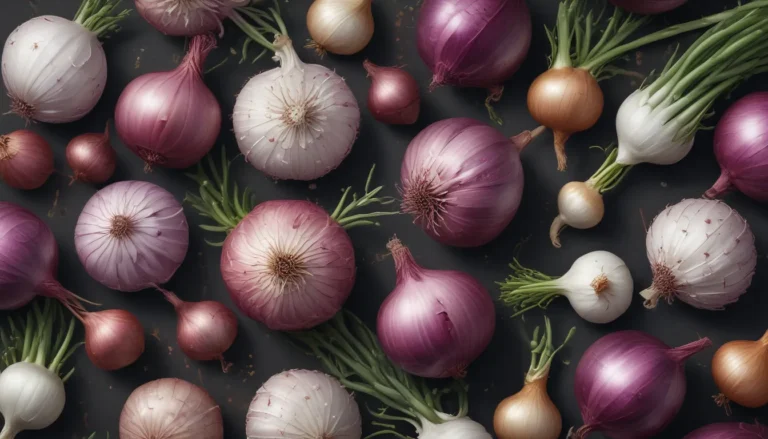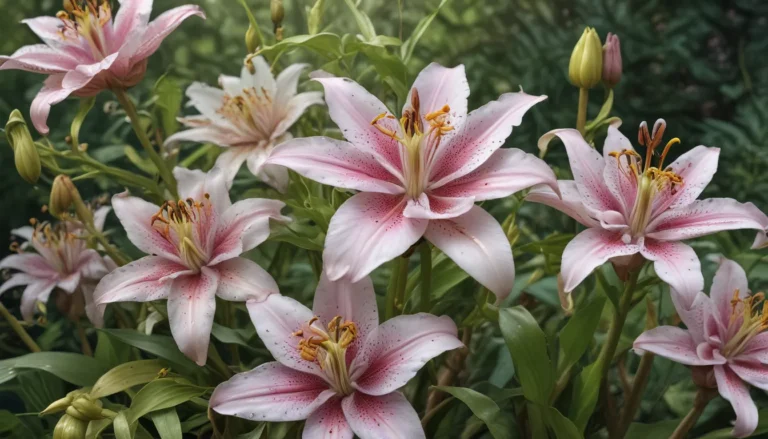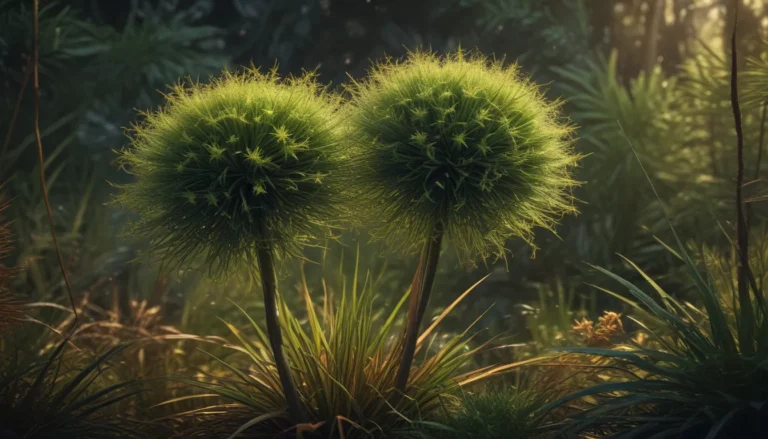The pictures we use in our articles might not show exactly what the words say. We choose these pictures to make you interested in reading more. The pictures work together with the words but don’t take their place. The words still tell you the important facts.
Anise hyssop, known scientifically as Agastache foeniculum, is a captivating herb that holds a rich history and a plethora of beneficial properties. This perennial plant, native to North America, is cherished for its aromatic leaves, vibrant flowers, and versatile applications. Join us on a journey to discover nine astounding facts about anise hyssop that will leave you in awe of its wonders.
A Herb with Versatility and Charm
Anise Hyssop is more than just a herb – it’s a delightful experience that encompasses a sweet and licorice-like aroma. The leaves and flowers of this captivating plant emit a fragrance that is reminiscent of anise or fennel, adding a touch of magic to any garden landscape. Imagine strolling through your garden, greeted by the enchanting scent of anise hyssop, inviting you to pause and enjoy the moment.
Embracing Bees with Open Arms
Anise Hyssop acts as a beacon for bees, butterflies, and hummingbirds, drawing them in with its beautiful lavender-blue flowers. These pollinators are essential for our ecosystem, making anise hyssop a valuable addition to any pollinator-friendly garden. The nectar-rich blooms provide a vital food source for these creatures, ensuring the continuation of their crucial role in nature.
Elevate Your Culinary Creations
The leaves of Anise Hyssop possess a flavor profile that combines hints of anise, mint, and citrus, offering a unique twist to culinary creations. Whether infused into teas, added to salads, or incorporated into syrups, the culinary potential of anise hyssop is limitless. Let your creativity flourish in the kitchen as you explore the diverse ways to incorporate this herb into your dishes.
A Timeless Tradition of Healing
Anise Hyssop boasts a rich history of medicinal use, with Native American tribes recognizing its healing properties centuries ago. From treating respiratory and digestive issues to serving as a natural remedy for colds and fevers, anise hyssop’s anti-inflammatory and antimicrobial properties make it a valuable addition to any natural medicine cabinet. Embrace the tradition of healing with this remarkable herb.
The Allure of Blooms
The breathtaking blooms of Anise Hyssop grace gardens with their vibrant shades of purple, lavender, or pink, creating a visual spectacle that captivates all who behold them. These elegant flowers not only add beauty to your outdoor space but also serve as a stunning backdrop that can attract admiration from passersby. Embrace the allure of anise hyssop blooms and elevate the aesthetics of your garden.
Resilience in Dry Times
Anise Hyssop is a resilient plant that thrives in dry conditions, making it an ideal choice for water-wise gardens. Its ability to withstand drought not only reduces maintenance efforts but also contributes to conservation by minimizing water usage. Embrace the resilience of anise hyssop and create a sustainable garden that flourishes even in challenging environments.
Tea Time Bliss
Indulge in a moment of tranquility with a cup of Anise Hyssop tea, allowing the soothing properties of this herb to envelop your senses. Simply steep a few leaves or flowers in hot water, and savor the aroma and flavor that promise relaxation and well-being. Embrace the ritual of tea time with anise hyssop and experience a moment of bliss amidst your busy day.
Enhancing Beeswax’s Appeal
Anise Hyssop’s nectar not only delights bees but also lends a unique aroma and flavor to beeswax. When bees forage on anise hyssop flowers, the resulting beeswax carries a distinct character that enhances products like candles, lip balms, and skincare items. Embrace the aromatic essence of anise hyssop in your beeswax-based creations and elevate their appeal with a touch of nature’s magic.
Foliage that Captivates
In addition to its stunning blooms, Anise Hyssop showcases foliage that is equally captivating. The lance-shaped leaves with a textured surface add visual interest to any garden landscape, serving as both a feast for the eyes and a source of flavor for culinary endeavors. Let the foliage of anise hyssop inspire your creativity as you explore its potential in infusing oils and vinegars.
With these enchanting facts about Anise Hyssop, it’s clear why this herb has garnered such admiration. Whether you seek to enhance your garden, elevate your culinary creations, or embrace natural remedies, Anise Hyssop offers a world of possibilities waiting to be explored. Embrace the magic of this herb and embark on a journey of discovery that celebrates its beauty, fragrance, and versatility.
FAQs: Unveiling the Secrets of Anise Hyssop
Q: How do I cultivate Anise Hyssop?
A: Cultivating Anise Hyssop is a straightforward process. Plant the seeds indoors or directly in the garden after the last frost, ensuring well-drained soil and ample sunlight. Keep the soil consistently moist until the plant establishes itself.
Q: Can Anise Hyssop be used in cooking?
A: Absolutely! Anise Hyssop’s unique licorice flavor complements a variety of dishes, from teas and salads to desserts and savory meals. Explore the culinary potential of Anise Hyssop and infuse your creations with its distinctive taste.
Q: What are the medicinal benefits of Anise Hyssop?
A: Anise Hyssop is renowned for its medicinal properties, offering relief for coughs, digestive issues, and inflammation. Its antibacterial and antifungal properties make it a valuable natural remedy for various ailments.
Q: Does Anise Hyssop attract pollinators?
A: Anise Hyssop is a magnet for pollinators such as bees, butterflies, and hummingbirds, thanks to its vibrant blooms and captivating fragrance. Embrace the role of Anise Hyssop in supporting pollinator populations in your garden.
Q: How do I care for Anise Hyssop?
A: Anise Hyssop requires minimal maintenance, needing regular watering, especially during dry spells. Deadhead spent flowers to encourage continuous blooming and prune the plant in the fall to promote healthy growth in the following season.
Final Thoughts: Embracing the Enchantment of Anise Hyssop
In conclusion, Anise Hyssop stands as a remarkable plant that captivates with its beauty, aroma, and diverse uses. Whether adorning your garden, enhancing your culinary creations, or soothing ailments, Anise Hyssop embodies a treasure trove of possibilities. Immerse yourself in the wonder of this herb and unlock the endless joys it has to offer. Embrace the enchantment of Anise Hyssop and let its magic unfold in your life.






